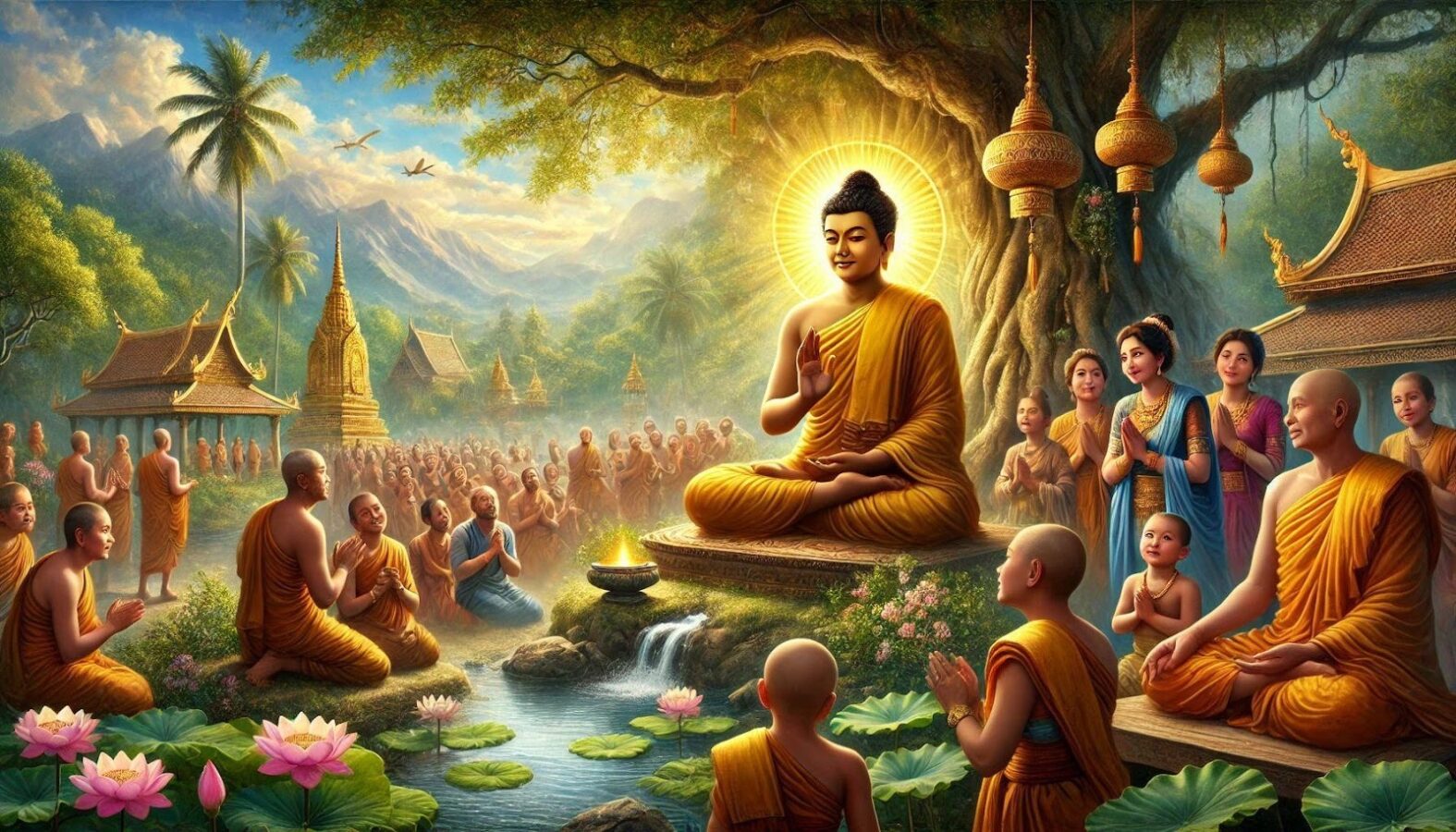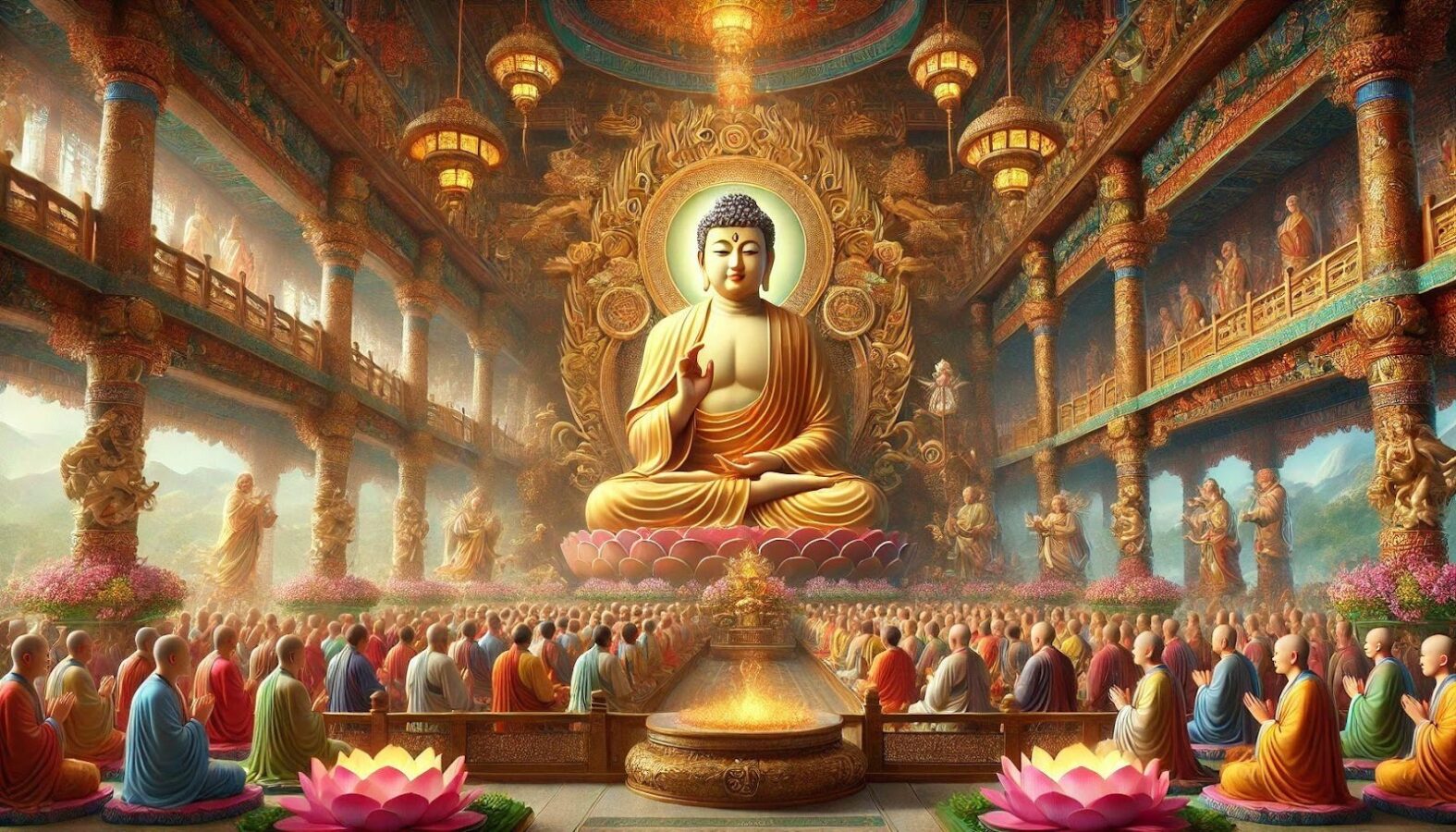
Date: 09/28/2024 09/29/2024
Location: Star Lake Meditation Center
Teacher: Otto Huang
Dharma Talk
Is the Same Consciousness Reincarnating? ─ The Wrong View of Monk Sati
Once, the Buddha arrived at the capital of the Kosala Kingdom, Sravasti, and stayed in the Jetavana Monastery on the southern outskirts of the city.
Among the monks living near the Jetavana Monastery was a monk named “Sati,” who was originally the son of a fisherman. He told the other monks,
“I have indeed heard from the Blessed One that the consciousness that transmigrates in the cycle of birth and death is unchanging.”
The other monks, upon hearing this, came to dissuade him, saying,
“Friend Sati, do not say such things. Do not slander the Blessed One. The Blessed One has never said that. The Blessed One teaches us in various ways that ‘consciousness arises due to conditions, and without those conditions, there is no consciousness.’ How could it be as you say?”
However, Monk Sati stubbornly held on to his belief and did not heed the other monks’ corrections. The monks, finding no other recourse, went to report this to the Buddha.
The Buddha summoned Monk Sati to confirm the matter face-to-face. Even then, Monk Sati still maintained his statement. The Buddha then asked him further,
“Sati, what do you mean by ‘consciousness’?”
“Blessed One, it is that which speaks, feels, and experiences the results of good and bad deeds.”
“You foolish person! From whom did you hear me say such a thing? Have I not explained in various ways that ‘consciousness arises due to conditions, and without those conditions, there is no consciousness’? You foolish person! I have never said such a thing, yet you have misrepresented and slandered me, causing harm to yourself and increasing your own sin. You will suffer long because of this.”
The Buddha then turned to the other monks and asked, “Monks, have you heard me teach that ‘consciousness arises due to conditions, and without those conditions, there is no consciousness’?”
“Yes, Blessed One! You have indeed taught us that in various ways.”
“Very good! Very good! Monks, you remember my teachings well. This foolish monk Sati has distorted my words and meanings, slandering me and harming himself, committing a great sin. Foolish person, do you realize your mistake?”
Monk Sati, deeply troubled by the Buddha’s rebuke, lowered his head in silence, reflecting on his error.
After reprimanding Monk Sati, the Buddha continued to instruct the monks, “Monks, do you see sentient beings?”
“Yes, Blessed One.”
“Monks, do you see that sentient beings depend on food for nourishment to survive?”
“Yes, Blessed One.”
“Monks, do you see that when the conditions for food are removed, sentient beings die?”
“Yes, Blessed One.”
“Monks, if these facts were not certain, would there be doubt?”
“Indeed, Blessed One.”
“Monks, if you see these facts with true wisdom, would there be any doubt?”
“No, Blessed One.”
“Monks, if you become attached to this pure and bright right view, cherishing it, would you have understood my teaching of the ‘raft simile’: that the raft is meant for crossing over, not for clinging to?”
“No, Blessed One.”
“Monks, if an outsider asks you, ‘Friend, what is the purpose of this pure and bright right view? What is its use? What merit does it have?’ How would you answer?”
“Blessed One, we would answer, ‘Friend, the purpose of this pure and bright right view is to overcome desire and attachment, to renounce, and to know things as they truly are.'”
“Very good! Very good! Monks, you should indeed answer this way.
Monks, for beings in this life and in future lives, there are four types of food that sustain and continue life. What are the four? Material food that can produce sensation, contact food, volitional food, and consciousness food.
Monks, where do these four types of food originate? What is the source of their arising? It is ‘craving’!
And where does craving come from? What is its source? It is ‘feeling’; contact; the six sense bases; name-and-form; consciousness; volitional formations; ignorance. Thus, from ignorance arise volitional formations; from volitional formations arises consciousness; from consciousness arises name-and-form; from name-and-form arise the six sense bases; from the six sense bases arises contact; from contact arises feeling; from feeling arises craving; from craving arises clinging; from clinging arises becoming; from becoming arises birth; from birth arise aging, sickness, death, sorrow, lamentation, pain, grief, and despair.
Therefore, with the cessation of ignorance, volitional formations cease; with the cessation of volitional formations, consciousness ceases; with the cessation of consciousness, name-and-form cease; with the cessation of name-and-form, the six sense bases cease; with the cessation of the six sense bases, contact ceases; with the cessation of contact, feeling ceases; with the cessation of feeling, craving ceases; with the cessation of craving, clinging ceases; with the cessation of clinging, becoming ceases; with the cessation of becoming, birth ceases; with the cessation of birth, aging, sickness, death, sorrow, lamentation, pain, grief, and despair cease.
Monks, with this understanding, would you indulge in the past, thinking, ‘Did I exist in the past? What was I in the past? How did I become what I am? What was I in the past?’
“No, Blessed One.”
“With this understanding, would you indulge in the future, thinking, ‘Will I exist in the future? What will I become in the future? What will I become? How will I become? What will happen to me in the future?'”
“No, Blessed One.”
“With this understanding, would you be perplexed about the present, thinking, ‘Do I exist or not? What am I? How do I exist? Where did I come from? Where will I go when I die?'”
“No, Blessed One.”
“Monks, with this understanding, would you commit any of the five heinous crimes: killing one’s mother, killing one’s father, killing an Arahant, causing a schism in the Sangha, or maliciously causing the Buddha to bleed? Would you deliberately break precepts, abandon the precepts, or give up the training in the Sangha? Would you turn to follow other teachers, seek fortune, or recite incantations to relieve suffering?”
“No, Blessed One.”
“Monks, with this understanding, would there be an eighth rebirth?”
“No, Blessed One.”
“Monks, with this understanding, would you speak out of reverence for the teacher? Would you say it just because the Great Ascetic, the Blessed One, has said so? Would you follow other teachers? Would you devote yourself to the worship of ordinary ascetics or Brahmins, return to their noisy discussions, and participate in their rituals and symbols for seeking blessings?”
“No, Blessed One.”
“Monks, would you speak only from your own knowledge, sight, and understanding?”
“Yes, Blessed One.”
“Very good! Monks, I teach you the true Dharma that can be seen in this very life, is immediately effective, invites verification, leads to upward progress, and is experienced by the wise within themselves. This is the Dharma I teach you.
Monks, the birth of a fetus requires three conditions: the presence of the parents, the union of their gametes, and the presence of the appropriate consciousness. After nine or ten months of pregnancy, the child is born. The child grows up gradually, and the physical sense faculties mature.
When the physical sense faculties mature, due to the lack of right mindfulness and the true understanding of mind liberation and wisdom liberation, when seeing with the eyes, hearing with the ears, smelling with the nose, tasting with the tongue, touching with the body, and thinking with the mind, one clings to what is pleasant and resents what is unpleasant, leading to continuous unwholesome actions. Thus, from the attachment to pleasant feelings, there is clinging; from clinging, there is becoming; from becoming, there is birth, aging, sickness, death, sorrow, lamentation, pain, grief, and despair. Monks, all of this is connected in a series, originating from the attachment caused by craving, isn’t it?”
“Yes, Blessed One.”
“Monks, the Tathagata, the fully enlightened one, with right mindfulness and the true understanding of mind liberation and wisdom liberation, does not cling to what is pleasant when seeing, hearing, smelling, tasting, touching, and thinking, nor does he resent what is unpleasant. Thus, he does not have attachment to pleasant feelings. When attachment ceases, clinging ceases; when clinging ceases, becoming ceases; when becoming ceases, birth, aging, sickness, death, sorrow, lamentation, pain, grief, and despair cease. Monks, all of this leads to liberation through the cessation of attachment, doesn’t it?”
“Yes, Blessed One.”
“Monks, remember this brief teaching on liberation through the cessation of attachment, and also remember the example of Monk Sati, the son of a fisherman, who was trapped in the great net of attachment.”

